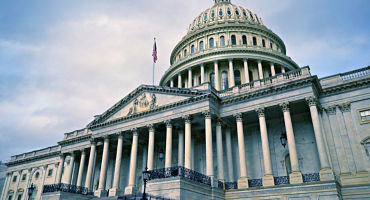The third bullet above about borrowing from abroad explains much of the price action and financial flows in the US economy since the end of the global financial crisis (GFC) in 2009. One of the reasons for exceptional US growth has been the government’s willingness to run large fiscal deficits following the GFC. Other major economies either lacked the fiscal flexibility to do so or were actively focused on decreasing deficits, as Europe was doing to solve the peripheral countries’ sovereign debt crisis. In Germany, Europe’s largest economy, an increase in savings relative to consumption created substantial current account surpluses. At the same time, the weakness of the euro following the peripheral crisis also increased the competitiveness of German exports.
In a world emerging from recession and starved for growth, these surpluses found their way to US capital markets, particularly into technology stocks and credit markets, which helped strengthen the US dollar. Fast forward to 2025, the continual recycling of trade surpluses into US assets has been one of the main drivers of substantial outperformance of US stocks and US-dollar strength for the past 15 years.
Now, if the Trump administration is truly dedicated to equilibrating US trade surpluses, in my view there are only two ways to go about it. The first is for the US to consume less and save more. The most expedient way to do this is for the government, which has been the biggest driver of incremental spending over the last few years, to reduce spending. This explains the rollout of the Department of Government Efficiency, or DOGE. Unfortunately, government spending has, as I noted above, largely accounted for the long run of exceptional US growth and asset price appreciation.
Moreover, as I argued in an article last summer, a decline in asset prices might cause the savings rate to rise more than most economists expect, given that US wealth is concentrated among Baby Boomers, most who are no longer working and are heavily allocated to the galloping stock market. A policy of lower government spending would not be a great environment for US stocks but arguably could be for US bonds, as investors shift their allocations away from risk assets and toward fixed income.
The second way to reduce US trade surpluses is for the rest of the world to consume more and save less. The Trump administration has encouraged this behavior by questioning US defense commitments and encouraging NATO members to increase their defense spending. Germany has taken the lead, committing to its largest fiscal package since reunification. Smaller countries are expected to follow suit, especially if Russia’s war in Ukraine rages on. The macro implications of this global spending shift are profound — again, given that the lack of aggregate demand across the eurozone has been a key reason for US equity performance. Higher savings from Germany and other countries with current account surpluses are likely to be spent domestically, boosting European asset prices at the expense of US equities and boosting global bond yields.
So far in 2025, global markets have been volatile as they try to anticipate the implications of three potential scenarios: 1) status quo, 2) weaker US government spending, 3) stronger global defense spending. As much as markets may reflect consternation and confusion over the various outcomes, investors should not underestimate the administration’s willingness to endure economic pain to rebalance global trade dynamics that have been in place for nearly 40 years.













